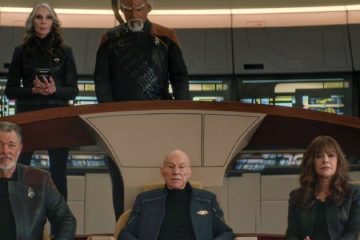After three 60th anniversary specials celebrating the series’ history, the new era of Doctor Who started properly with the first Christmas special to feature Ncuti Gatwa’s Fifteenth Doctor and Millie Gibson’s Ruby Sunday, “The Church on Ruby Road.” The Christmas special introduced Ruby, an orphan found on the steps of a church on Christmas Eve, and saw her become entangled in an adventure with the Doctor. The Doctor and his new companion found themselves up against a horde of goblins, set upon eating babies and causing mayhem. The goblins were a more fantastical breed of villain than Doctor Who usually features, heralding things to come.Doctor Who’s head writer, Russell T Davies, revealed in an interview with Radio Times that the series is “taking a sly step towards fantasy.” Doctor Who’s 60th Anniversary specials hinted at fantasy elements becoming more prominent in the series, which has traditionally been focused on sci-fi stories. However, with the return of the Toymaker and the emergence of other enemies from beyond the universe, Doctor Who has given itself a license to defy the known laws of physics and explore stranger forms of science — sciences that may appear almost indistinguishable from magic to the Doctor and Ruby.Although the Doctor insists that the goblins’ science is not magic, it is clearly not a form of science with which he is familiar. The goblins feast on chance, coincidence and bad luck, taking power from these abstract notions rather than anything tangible. They are shown altering time in order to provoke coincidence, making the humans caught up in that coincidence all the more appetizing for them. The Doctor refers to the goblins’ reliance on coincidence as “a brand-new science for me” and dubs it “the language of luck.” Ruby insists that the mysterious workings of the goblins’ science are practically the same as magic.
After three 60th anniversary specials celebrating the series’ history, the new era of Doctor Who started properly with the first Christmas special to feature Ncuti Gatwa’s Fifteenth Doctor and Millie Gibson’s Ruby Sunday, “The Church on Ruby Road.” The Christmas special introduced Ruby, an orphan found on the steps of a church on Christmas Eve, and saw her become entangled in an adventure with the Doctor. The Doctor and his new companion found themselves up against a horde of goblins, set upon eating babies and causing mayhem. The goblins were a more fantastical breed of villain than Doctor Who usually features, heralding things to come.
Doctor Who‘s head writer, Russell T Davies, revealed in an interview with Radio Times that the series is “taking a sly step towards fantasy.” Doctor Who‘s 60th Anniversary specials hinted at fantasy elements becoming more prominent in the series, which has traditionally been focused on sci-fi stories. However, with the return of the Toymaker and the emergence of other enemies from beyond the universe, Doctor Who has given itself a license to defy the known laws of physics and explore stranger forms of science — sciences that may appear almost indistinguishable from magic to the Doctor and Ruby.
Although the Doctor insists that the goblins’ science is not magic, it is clearly not a form of science with which he is familiar. The goblins feast on chance, coincidence and bad luck, taking power from these abstract notions rather than anything tangible. They are shown altering time in order to provoke coincidence, making the humans caught up in that coincidence all the more appetizing for them. The Doctor refers to the goblins’ reliance on coincidence as “a brand-new science for me” and dubs it “the language of luck.” Ruby insists that the mysterious workings of the goblins’ science are practically the same as magic.
#Church #Ruby #Road #Unveils #Doctor #Whos #Science
Note:- (Not all news on the site expresses the point of view of the site, but we transmit this news automatically and translate it through programmatic technology on the site and not from a human editor. The content is auto-generated from a syndicated feed.))



